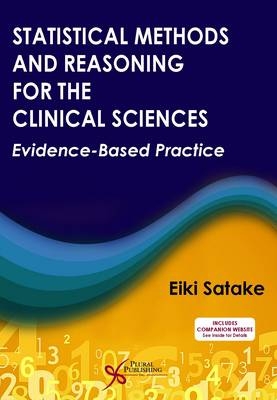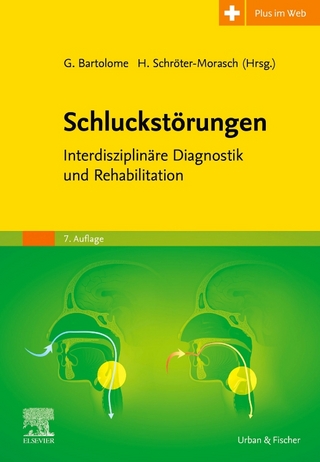
Statistical Methods and Reasoning for the Clinical Sciences
Plural Publishing Inc (Verlag)
978-1-59756-433-5 (ISBN)
The growing emphasis on evidence-based practice has increased the importance of using clinical studies for empirical demonstration of the efficacy of clinical interventions. As a result, speech-language pathologists and audiologists must be well-versed in research methods and statistical analysis. In fact, a demonstrated knowledge of statistics (including a stand-alone course in statistics) is a requirement of ASHA certification effective September 1, 2014. Statistical Methods and Reasoning for the Clinical Sciences is the ideal textbook to meet the need for a solid understanding of statistics for communication sciences and disorders. The author clearly defines and illustrates the foundational concepts of statistics, including statistical vocabulary, population parameters, sampling methods, and descriptive methods like measures, correlation, and regression. Emphasis is placed on the topic of probability because a firm grasp of the probabilistic approach is essential for any clinician to generate a precise diagnosis.The readers of this textbook will: Comprehend how clinical research reflects a series of steps that conform with the scientific method of problem solving (observation, hypothesis formation, hypothesis testing, verification, and evaluation).
Appreciate the importance of including rationales in a research study that entail three interrelated tasks: description (why it was done), explanation (what was done and to whom), contextualization (how the results relate to other bodies of knowledge). Distinguish between "statistical significance" and "clinical significance." Value the importance of scientific literacy as a major ingredient of evidence practice. With its comprehensive scope and timely content Statistical Methods and Reasoning for the Clinical Sciences is the ideal text for students of communication sciences and disorders who wish to engage in truly evidence-based practice.
Eiki Satake, Ph.D., Associate Professor of Mathematics/Statistics, Department of Communication Sciences and Disorders, Emerson College.
1 What Is Statistics? Descriptive and Inferential Statistics 2 Organizing and Graphing Data 3 Descriptive Methods: Measures of Central Tendency and Variability 4 Foundation of Standard Normal Distribution: Describing Individual Scores 5 Measuring the Strength of Association and Making Predictions: Correlation and Regression Part 1. Measuring Relationships: Correlation 6 Measuring the Strength of Association and Making Predictions: Correlation and Regression Part 2. Making Predictions: Regression 7 The Standard Normal Distribution 8 Probability 9 Hypothesis Testing: One Sample Case for the Mean 10 Hypothesis Testing: Two Sample Cases for the Mean 11 Making Inferences about Population Proportions 12 Estimating Population Parameters 13 Analysis of Variance: One-Way 14 Categorical Analysis: Chi-Square Tests 15 Not the Most Widely Used Methods but Important to Know for Determining "Practical and Personal Significance" 16 Useful Research Designs for Clinical Studies: Fundamental Concepts,Foundations, and Procedures Appendix A. Review of Basic Mathematics Appendix B. Some Statistical Applications and Questions (Adapted from Literature): Several Case Studies Appendix C. Calculation of the Power of a Statistical Test Appendix D. Evidence-Based Medicine: Calculations of Various Probabilities with Nomogram Appendix E. Measures of Disorder/Disease Occurrence Appendix F. Flowchart for Classical Statistics versus Bayesian Statistical Approach in Hypothesis Testing Appendix G. Sampling Techniques Appendix H. Writing a Proposal of ASHA Convention Paper Appendix I. The Fisher's p-Value Method for Hypothesis Testing(aka Combined Method) Appendix J. Single-Subject Designs Appendix K. Area Under the Standard Normal Curve for Values of z Appendix L. Standard Scores Corresponding to Percentile from 0.5000 to 0.9995 Appendix M. Critical Values of the t-Distribution Appendix N. The F Distribution Values of F0.05, F0.025, and F0.01 Appendix O. Critical Values of Q Appendix P. The Chi-Square Distribution Appendix Q. Critical Values for the Wilcoxon Signed-Rank Test for n = 5 to 50 Appendix R. Critical Values for a Mann-Whitney U-Test Appendix S. Statistical Inference: A Bayesian Perspective
| Erscheint lt. Verlag | 1.8.2014 |
|---|---|
| Zusatzinfo | b/w illustrations |
| Verlagsort | San Diego |
| Sprache | englisch |
| Maße | 178 x 254 mm |
| Gewicht | 1039 g |
| Themenwelt | Medizin / Pharmazie ► Gesundheitsfachberufe ► Logopädie |
| Medizin / Pharmazie ► Medizinische Fachgebiete ► HNO-Heilkunde | |
| ISBN-10 | 1-59756-433-8 / 1597564338 |
| ISBN-13 | 978-1-59756-433-5 / 9781597564335 |
| Zustand | Neuware |
| Haben Sie eine Frage zum Produkt? |
aus dem Bereich


